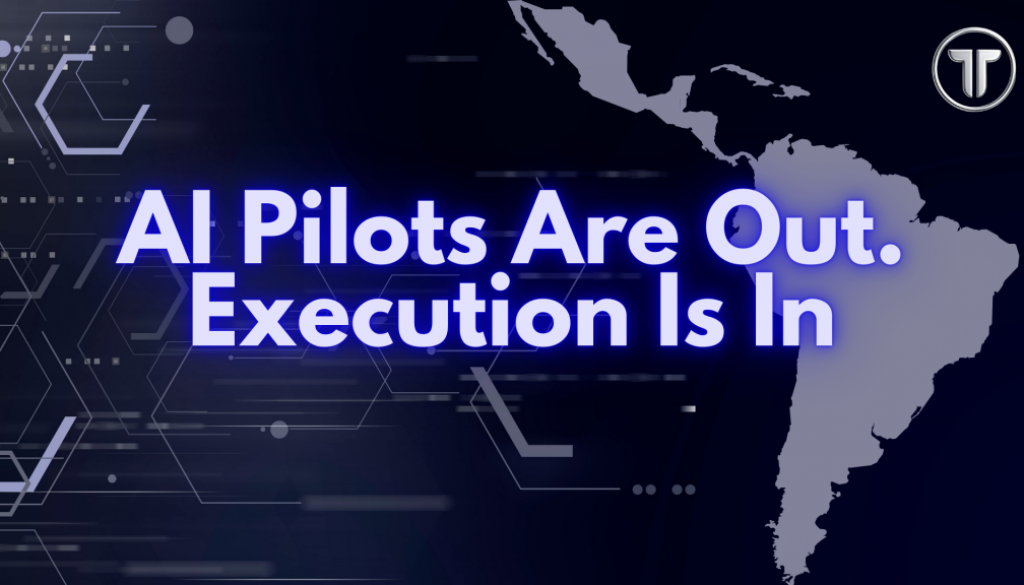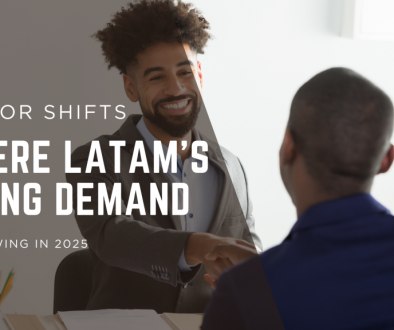AI Pilots Are Out. Execution Is In: Latin America’s New Phase
For years, Latin America’s AI story has centered on pilots, small-scale experiments designed to test what machine learning could do. But in 2025, that narrative is changing. The region is entering a new phase: execution at scale. Governments, corporations, and startups are no longer content with proof-of-concept. They are embedding AI into the workflows that run economies, cities, and industries.
1. From Experimentation to Execution
In the past, many AI projects in Latin America ended as isolated demos. The problem wasn’t interest, it was infrastructure, funding, and integration. Now, those gaps are closing:
- Cloud adoption has surged across Colombia, Mexico, and Brazil.
- Universities and startups are collaborating on industry-grade datasets.
- Governments are publishing AI roadmaps, creating clarity for investment.
As a result, AI projects are moving out of labs and into logistics centers, hospitals, and financial institutions.
2. Cross-Sector Collaboration as a Catalyst
At Tesoro AI, we’ve observed how multi-stakeholder partnerships are fueling momentum:
- Healthcare: AI is now used for diagnostics in public hospitals across Chile and Argentina.
- Agriculture: Startups are embedding predictive analytics into farming co-ops, helping farmers anticipate weather and crop yields.
- Finance: Banks like BBVA and Nubank are deploying AI for fraud detection and credit scoring, built with LATAM engineers.
This collaboration ensures that AI adoption isn’t siloed. It scales across entire sectors.
3. The Role of Talent
Execution depends on people as much as technology. Latin America’s tech talent pool has matured significantly:
- Senior engineers are returning from Silicon Valley to lead local teams.
- Universities are embedding AI into core curriculums.
- Bootcamps and accelerators are upskilling mid-career professionals into AI roles.
The result is a workforce ready not just to test ideas but to own entire AI workflows.
4. Case Studies in Execution
- Logistics: Mexican logistics firms now use AI to route trucks in real time, reducing delivery costs by 20 percent.
- Healthcare: Colombian hospitals are rolling out AI triage systems, cutting patient wait times by half.
- Energy: Brazilian utilities are deploying predictive maintenance AI to prevent outages before they occur.
These aren’t pilots. They are operational systems with measurable ROI.
Conclusion
The AI era in Latin America is maturing fast. Pilots were valuable because they built confidence and proved feasibility. But the future belongs to execution. What sets this new phase apart is not only the scaling of technology but also the intentional alignment between governments, corporations, and startups. The ecosystem is converging around common goals, from efficiency gains in healthcare and logistics to resilience in energy and finance.
This matters for two reasons. First, it signals that Latin America is ready to play a more assertive role in the global AI economy, moving from consumer to producer of scalable AI solutions. Second, it demonstrates that AI is no longer a speculative investment here. It is becoming a foundational tool that businesses, policymakers, and communities rely on daily.
For companies, this is the moment to lean in. Those who wait risk falling behind, while those who embrace this execution wave will not only innovate but help define the region’s AI-driven future. At Tesoro AI, we are proud to be part of this movement, helping organizations scale beyond pilots and realize the transformative power of execution-ready AI talent.
Looking for execution-ready AI talent? Partner with Tesoro AI to scale your workflows today.
Sources
Hi Ventures. (2025). Latin America’s AI shift: From pilots to execution. Hi Ventures Report.
Nubank. (2025). AI for financial inclusion in Latin America. Retrieved from https://nubank.com
BBVA. (2025). Fraud detection and AI applications in LATAM banking. Retrieved from https://bbva.com
ProColombia. (2025). AI adoption across sectors in Colombia. Government of Colombia.




